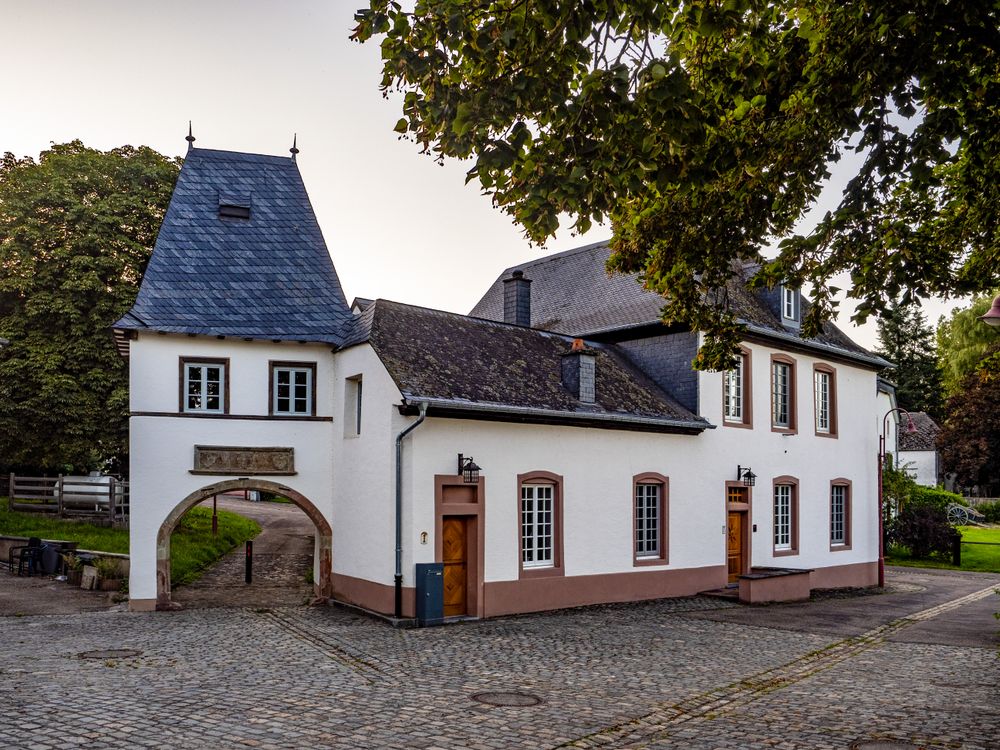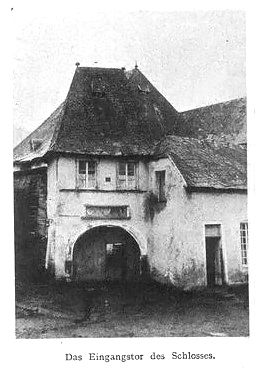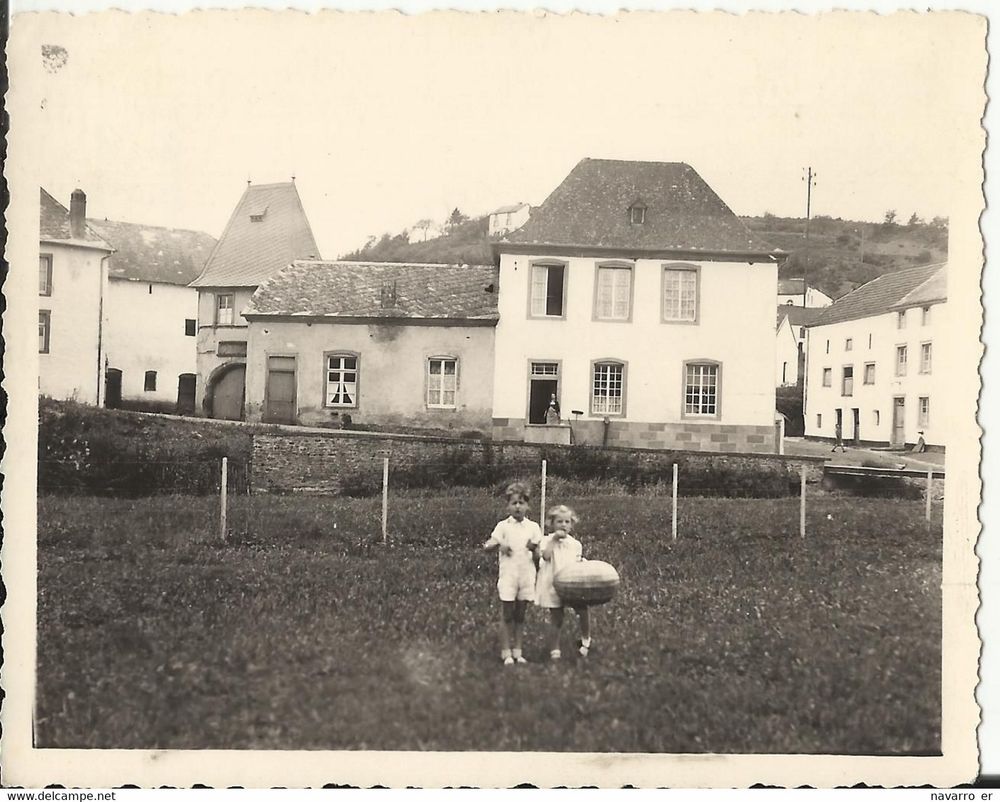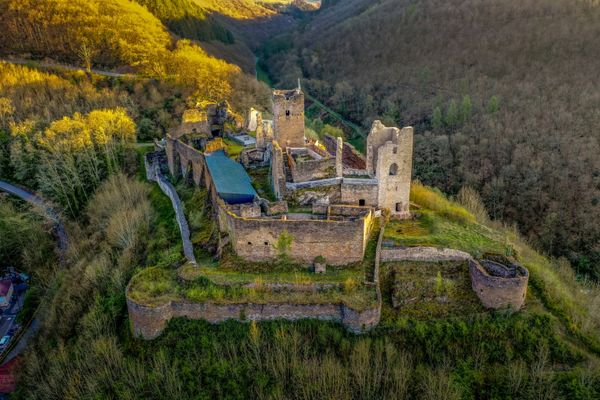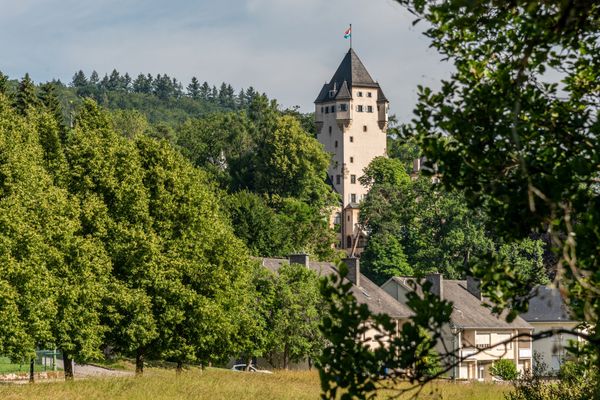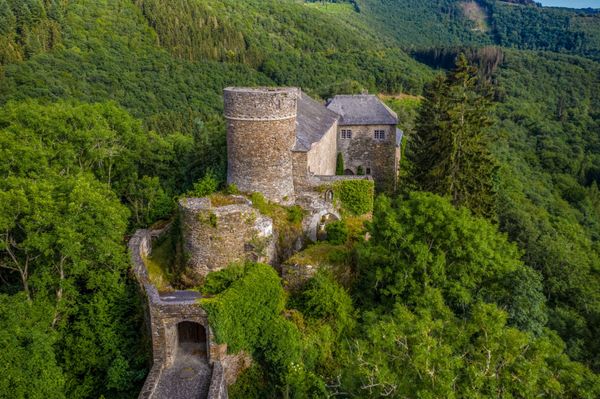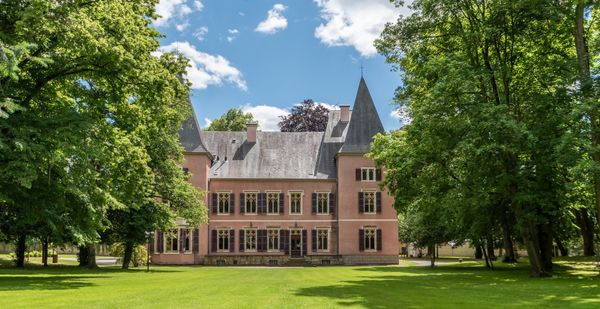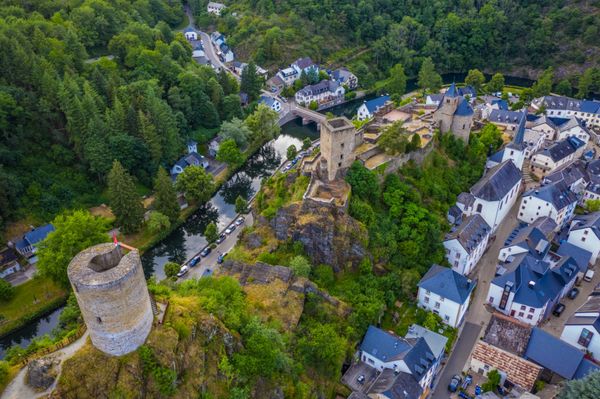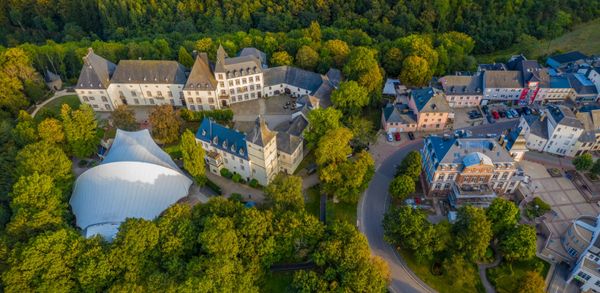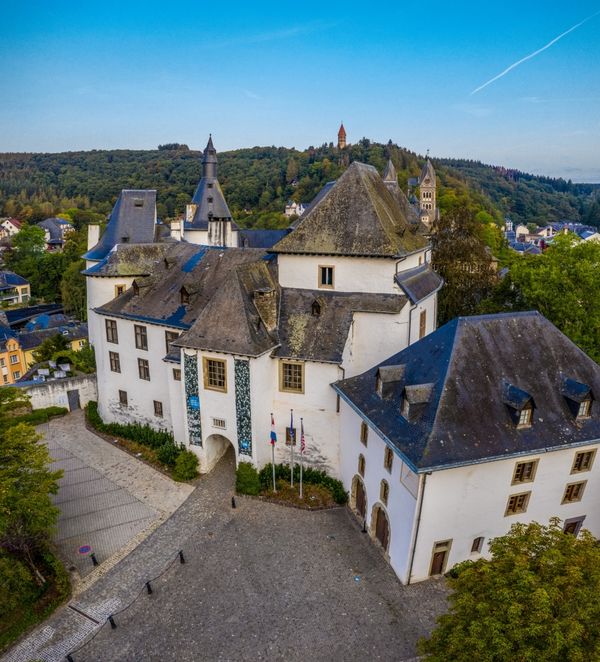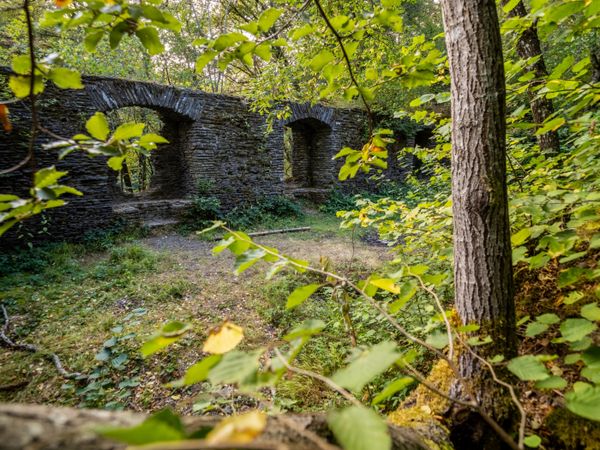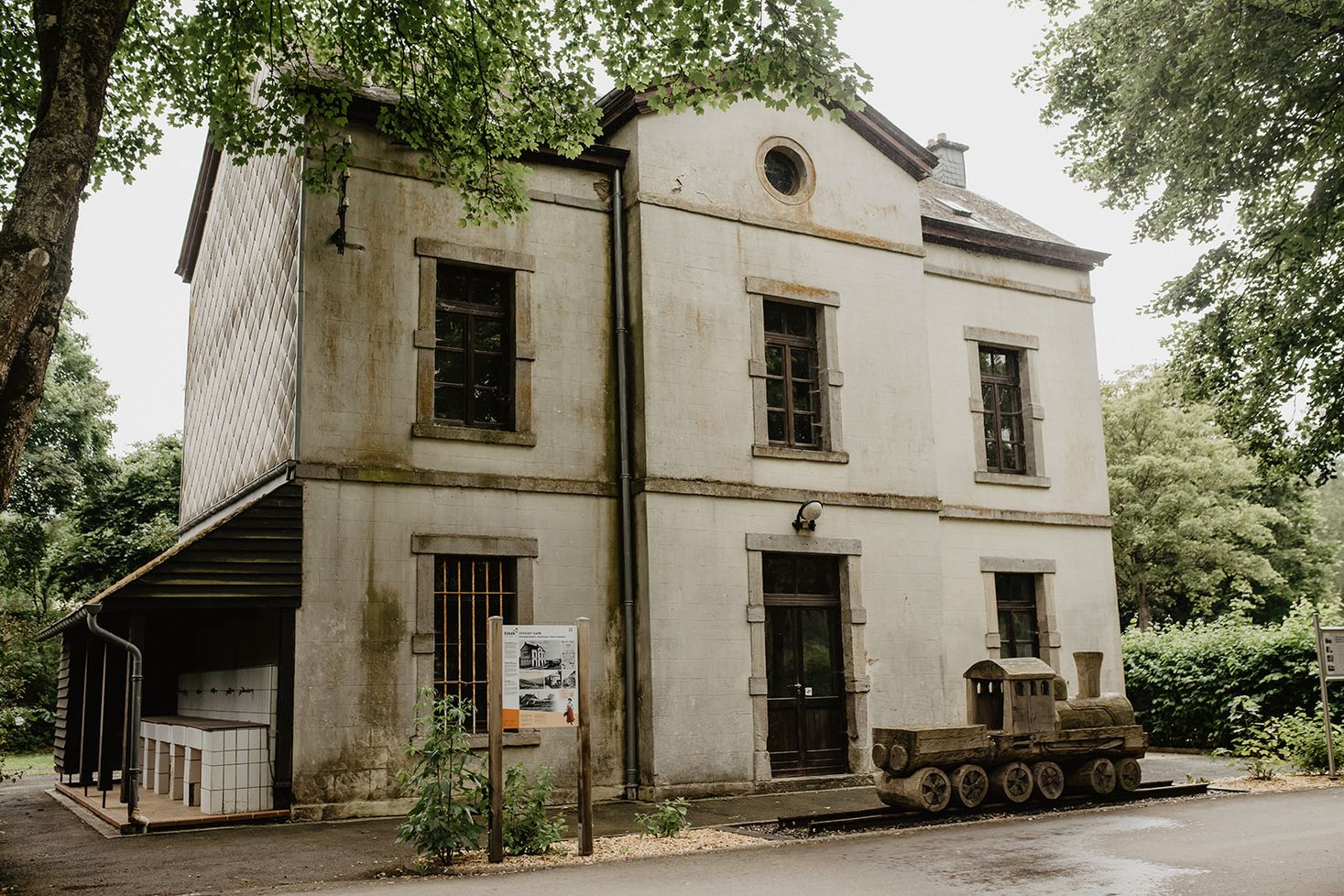
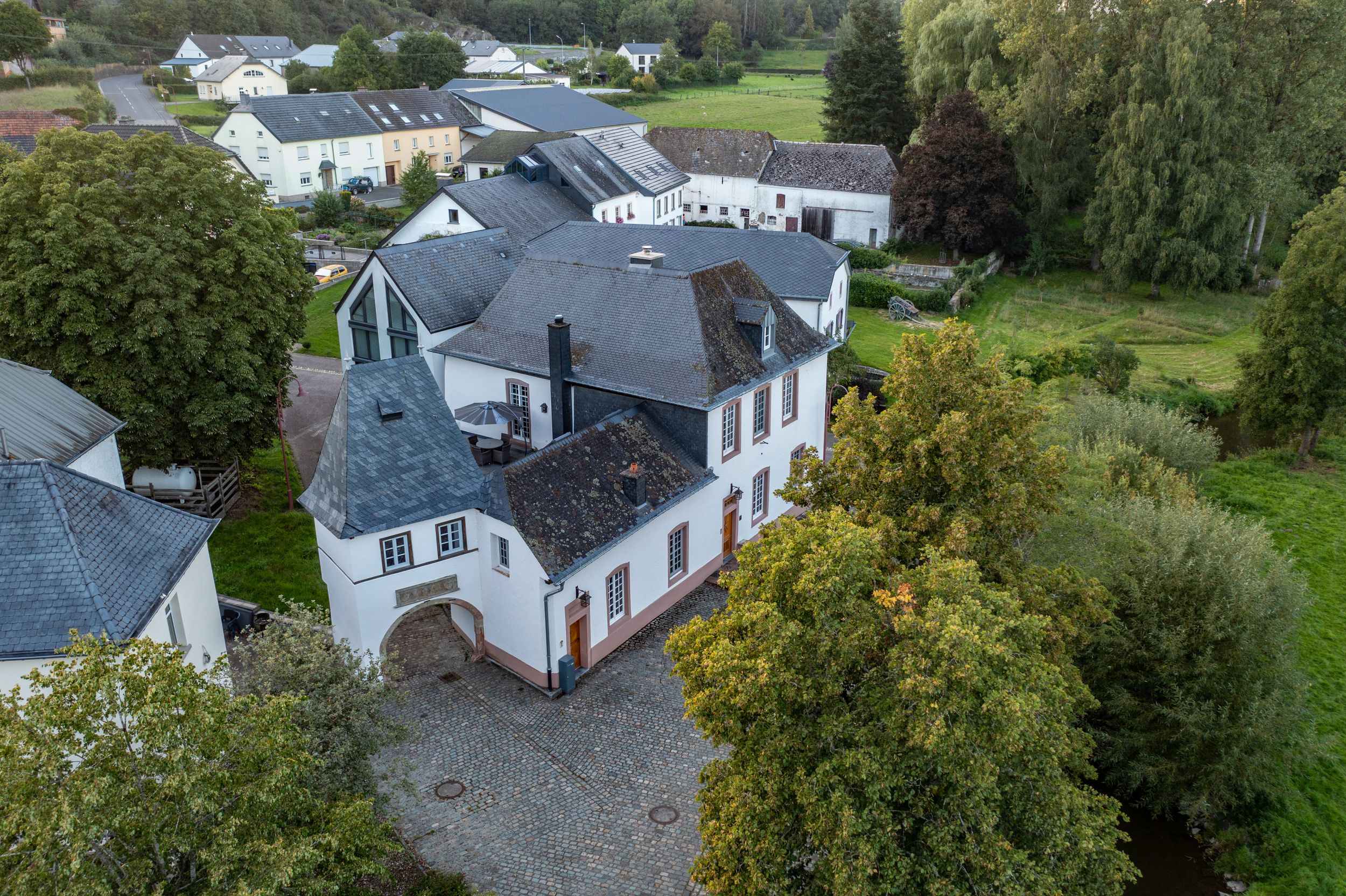
Wëlwerwoltzer Schlass – Estate ruins
In the annals of Luxembourg's history, Wilwerwiltz Castle stands as a silent witness to the passage of time, its story woven through centuries of nobility, renovation, and cultural heritage.
14th Century: Rise of Nobility
The lordship of Wilwerwiltz emerges in the 14th century, cradled in the hands of the von Basenheim family. Renowned across the Eifel region, they preside over the castle's domain, linking their lineage to illustrious houses like Brandenburg, Clervaux, and Bourscheid.
16th Century: Renaissance and Renovation
In 1586, Maria von der Heiden breathes new life into the manor, overseeing its renovation and the erection of a majestic entrance gate, a testament to the castle's enduring allure. The inscription on the gate speaks of a noble past, honoring the memory of her two late husbands who once graced its halls.
17th Century: Transition of Power
The von Basenheim legacy wanes by the 17th century, passing through the hands of Baron von Wiltz and the Bockholtz family, each leaving their mark on the castle's walls. However, the winds of change blow fiercely with the onset of the French Revolution, altering the fate of nobility across the land.
20th Century: Decline and Preservation
By 1928, the castle faces the specter of decay. The municipality steps in, purchasing the castle at auction and embarking on a journey to salvage its legacy. Only the tower and the entrance gate survived the process of demolition
Legacy and Remembrance
The tower, now an integral part of the public square, stands as a silent sentinel and has become the emblem of Wilwerwiltz.

